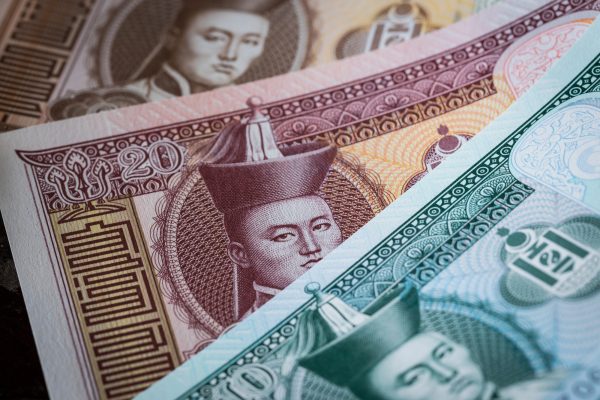In recent months, Mongolia has tapped into its financial market, aiming to boost investor confidence and attract funding from diverse sources. Mongolia’s debt market has witnessed a surge in investor interest, which can reflect growing confidence in the country’s economic trajectory.
In 2024, Mongolia experienced a strong capital inflow – raising more than $1.2 billion – which can be attributed not only to the country’s economic recovery but also some structural changes. The International Monetary Fund Concluding Statement stressed that “[t]he adoption of a nominal debt ceiling of 60 percent of GDP is a major step forward in strengthening Mongolia’s fiscal rules…” but warned that domestic policymakers need to be vigilant on emerging risks.
Mongolia’s economy and investment environment require constant global engagement. While Mongolia’s landlocked position limits its exposure, it is having new success attracting businesses and investments. Market participants are now speculating on another possible credit rating upgrade, further bolstering investor sentiment. Fitch Ratings upgraded Mongolia’s sovereign credit rating from B- to B with a stable outlook in September 2024.
The Mongolian government recently issued $650 million sovereign bond, priced at the tightest spread in the country’s history at 6.85 percent, which underscores the heightened demand. This milestone showcases Ulaanbaatar’s ambition and goals to access international capital markets at increasingly favorable terms.
Last week, the Bank of Mongolia made another major decision to stimulate growth and curb inflation, while. According to the central bank, the newly passed monetary policies have three aims. First, it will increase the policy rate by 2 percentage points to 12 percent. Second, it will reset the upper limit of the debt service-to-income (DSTI) ratio to 50 percent for banks’ newly issued and restructured consumer loans. Third, for loans secured by pension and benefit income, the borrower’s remaining income after paying the monthly loan installments shall be no less than the minimum subsistence level.
Beyond sovereign debt, Mongolia’s corporate bond market is also gaining momentum. In June 2024, Golomt Bank led the way with a successful $300 million bond issuance, later tapping an additional $100 million due to strong investor demand. This transaction set a crucial benchmark for other financial institutions considering international bond issuances. Following Golomt’s lead, other Mongolian banks and corporations are evaluating similar capital-raising strategies to enhance liquidity and fund expansion.
Trade and Development Bank (TDB) became a trailblazer by issuing Mongolia’s first international green and social bonds, signaling a growing commitment to sustainable capital raising. This move aligns with global investor demand for instruments that acknowledge the importance of environmental, social, and governance (ESG) factors and sets the stage for further ESG-related financial innovation in the country.
Mongolia has both a political and an environmental need to attract sustainability-linked financing – not just via banking but through grants, programs, and agreements with global partners. As the United States leaves the climate sector at large, Mongolia has potential to attract investments from European and Asian partners.
Additionally, Khan Bank’s recent issuance of a social bond by the International Finance Corporation (IFC) represents a significant milestone. This bond aims to deepen Mongolia’s local capital markets, providing an alternative to foreign currency debt and reducing exposure to exchange rate volatility.
In Ulaanbaatar, the mayor’s office also issued the country’s first municipal bond, successfully raising $500 million. The subnational issuance will help to diversify Mongolia’s debt instruments and strengthen investor confidence in municipal-level fiscal management. The funds raised will be directed toward critical infrastructure projects, including transportation, energy, and urban development, enhancing the capital city’s long-term economic sustainability.
Despite these positive trends, there are notable challenges and risks. Geopolitics and disruption in financial markets can impact investment, the debt market, and fixed-income investments.
Global interest rate movements will also impact Mongolia’s cost of capital. If other major central banks maintain high interest rates, emerging markets like Mongolia may face increased borrowing costs, potentially limiting future debt issuances.
On the domestic front, concerns are growing that the government’s push to implement 14 mega-projects – largely dependent on state procurement – could fuel inflation. Higher prices could erode real returns on fixed-income investments. In its March meeting, the Bank of Mongolia warned that “inflation is projected to remain above the Bank of Mongolia’s target range throughout this year,” adding, “If upcoming mega projects are financed through domestic sources, heightened pressures on the balance of payments and the exchange rate could further accelerate inflation.
Another key challenge is ensuring the sustainability of Mongolia’s debt. The surge in the bond market comes with concerns about burdening future generations with excessive debt. While investor confidence is strong, the government must remain vigilant about maintaining fiscal discipline, avoiding excessive reliance on external borrowing, as well as tackling corruption and transparency.
For now, though, Mongolia’s debt market looks promising, offering diverse options such as sovereign bonds, corporate debt, green financing, or municipal bonds. For investors seeking exposure to high-growth frontier markets with improving credit fundamentals, Mongolia presents a compelling case. The Mongolia Investment Forum, which will take place in New York in April, will seek to further capitalize on these positive trends in Mongolia’s financial market.


